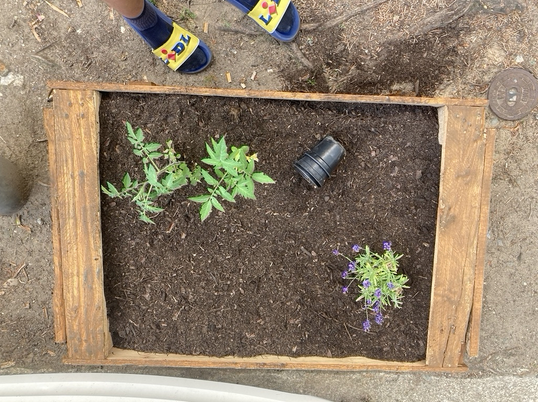by Anna, Fiona and Iqra
In this final blog post, we would like to describe our experiences from this semester and share results that we gathered from our guerilla gardening experiment. The starting point of our experiment was the concept of the guerilla garden, especially, how to protect and guard a guerilla garden in the hustle and bustle of a public city street. We wanted to evaluate how effective physical barriers (like fences) and signs would protect the growth of our vulnerable plants in public. Plants can be damaged in public in many possible ways, such as people stepping on them, driving over them, littering, pet feces and harsh weather.
Our experiment has implications for the protection of guerilla gardens worldwide. And although the experiment was quite preliminary and not executed at a large scale which would make it very scientifically precise, we think it still draws important conclusions and insights into the maintenance and survival of urban gardens. With the impacts of climate change looming over all urban dwellers, the preservation of urban green spaces – even if they’re as small as local guerilla gardens – can still be valuable in terms of the microclimate, water retention or in the case of guerilla gardened trees, carbon sequestration and shade. For this reason, exploring how to best protect urban gardens is in the best interest of all urban communities.
As we mentioned during our presentation, we used 4 different sites for our experiment:
- No fence, no sign
- Fence, no sign
- No fence, sign
- Fence and sign
To record our results, we decided to take pictures and log our observations in a diary, mainly into 4 different categories: All good, Trash, Wow, and Destruction:
- All good = All plants respected. No trash found. No vandalism.
- Wow = Observed people actively respecting the plants
- Trash = Trash found on side
- Des.: = Destruction, meaning sometime got destroyed/broken
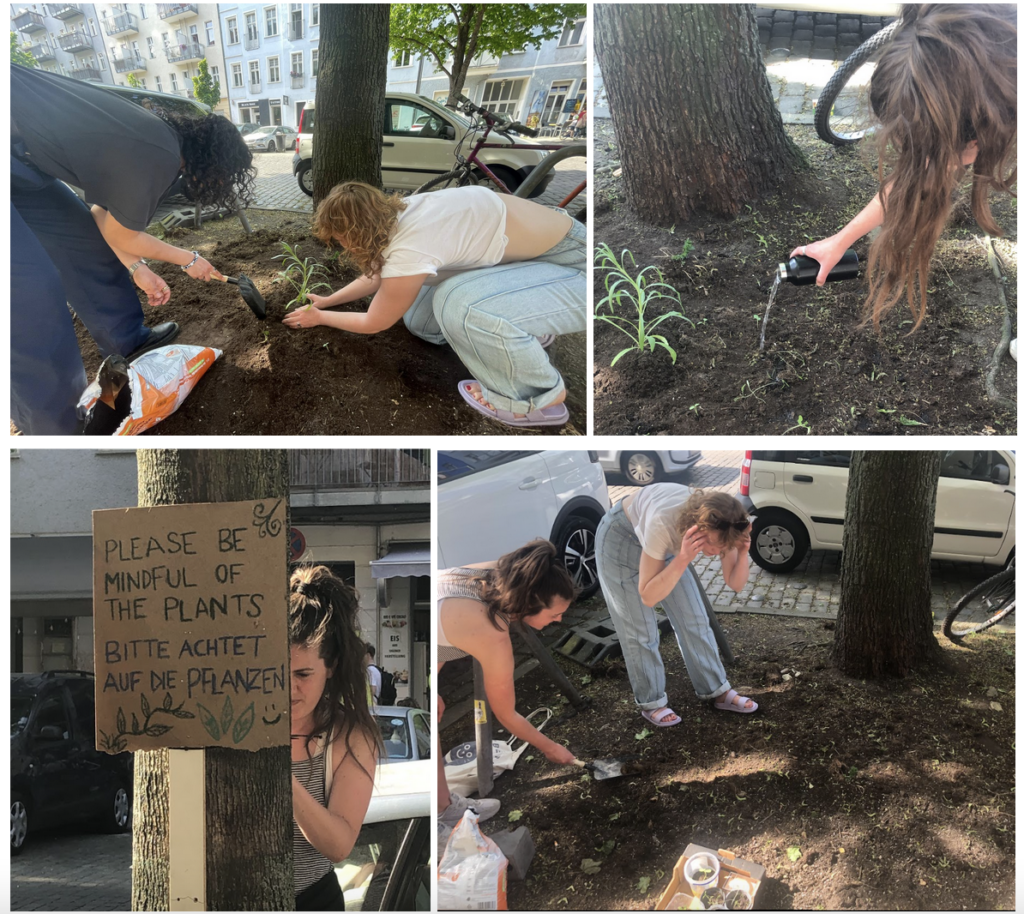
51% of the time we made an observation, everything was alright. 35% of the time, there was trash. On two occasions for the signed and signed+fenced locations, respectively, we noticed people were actively making sure not to disturb the plants by stepping on them or allowing their dogs to poop on the plants. On two other occasions, we noticed destructive activities on the sites without fences and signs. Figure 1 below summarizes our observations in a chart.
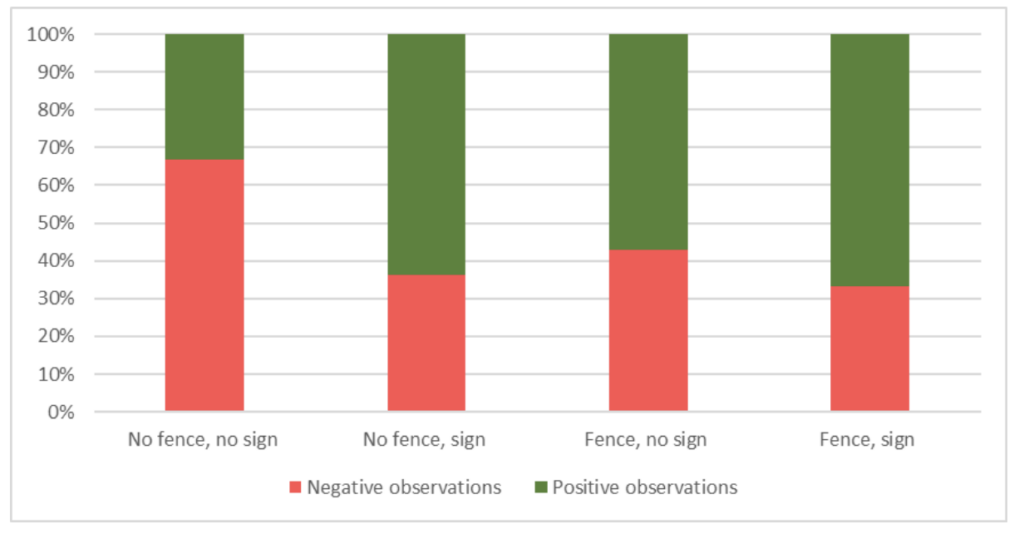
Generally, our findings indicate that if you want your guerilla garden to be as protected from harm as possible, put up a sign and a fence! Some extra points to consider that we couldn’t cover in our experiment due to time constraints: how big the fence is, how many signs or what type of signs, a deeper analysis of where to place the guerilla garden in the first place. There are many other factors that could play a role in the survival of a guerilla garden, and since they are in public, anything could happen to them! In this regard, we can’t even anticipate every possible outcome of a guerilla garden. So in the end the best thing to do is just plant what you can, protect as much as you can and hope for success!
Since June we are Preparing our own Gardening Projects:
We have been examining the reactions of our own kiez communities in Lichtenberg and Wilmersdorf. Trying to understand how people react to guerilla type gardening projects and in the end how they materialize in our Kiez (neighborhood).
Jule will be hijacking one of those “macgyver” garden beds. It seems like someone (sadly not so much visible in the pictures) has put some painted pavement stones around the tree squares. First Picture was taken on the 2nd of June.The second Picture was taken on 7th of July.
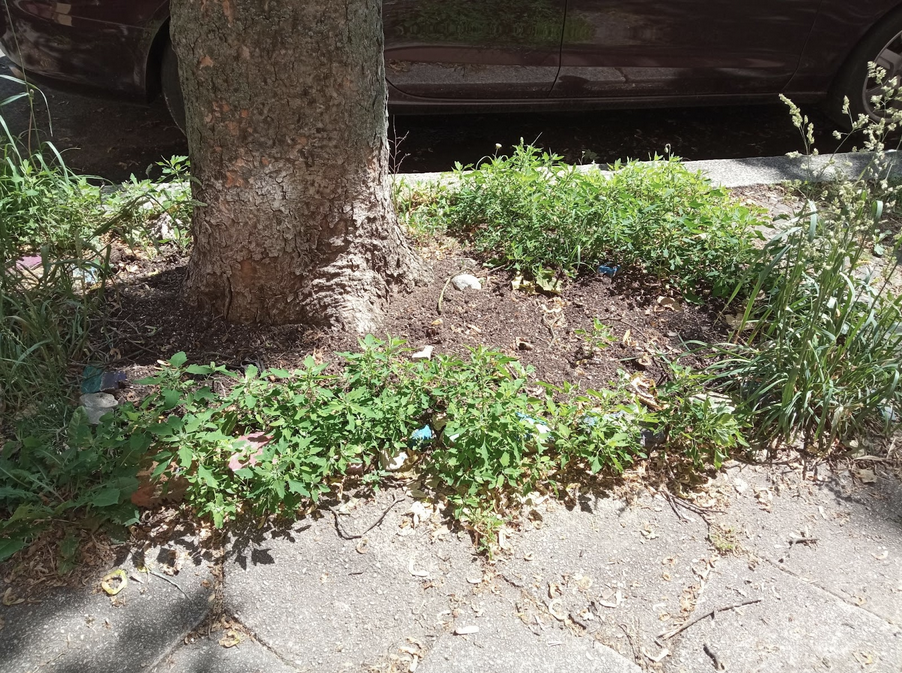
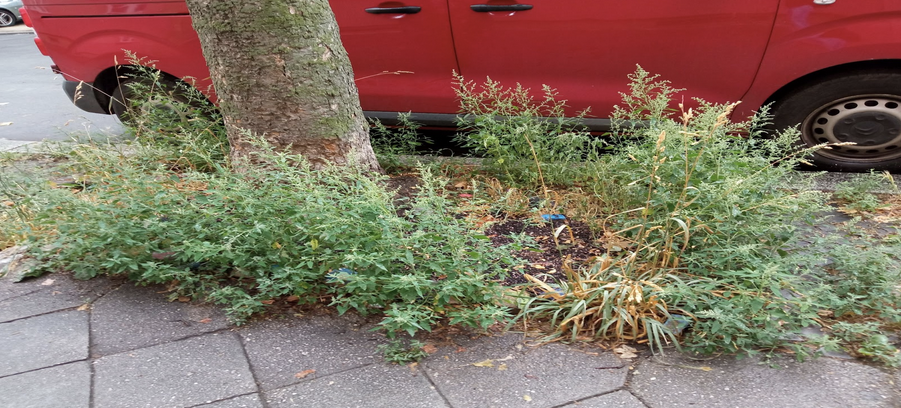
I took pictures of the already existing plants there and ran them through google lense. The outcome was:
There is a lot of red clover,which provides enough nutrition for bees and some seedlings of celandine poppy. So since there are 2 of those “Do it yourself garden beds”, I decided to plant some flowers on one garden bed (which is not in the pics right now) that attract butterflies and since the other one (in this picture) already has some flowers that attract bees,some additional greens.
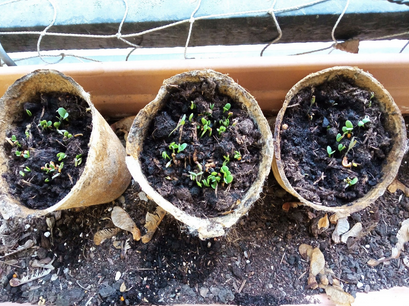
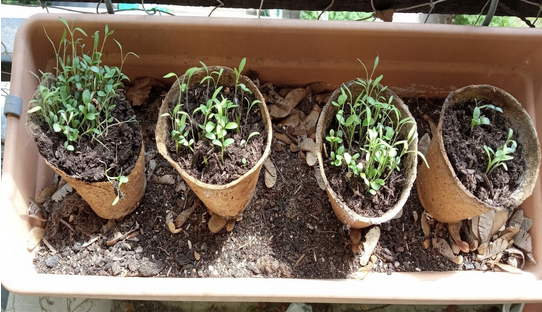
Since the Weather was rather unpredictable I decided to pre grow them on the balcony. Left side was taken on the 5th of June, the right side was taken on 8th of June. In addition to the “wild flower” mix, I’ve decided to pre grow sun flowers.
As you can see, all of them got very sunburned despite watering everyday and tried to keep them away from too much sunlight. The 4th batch by now sadly is dead.
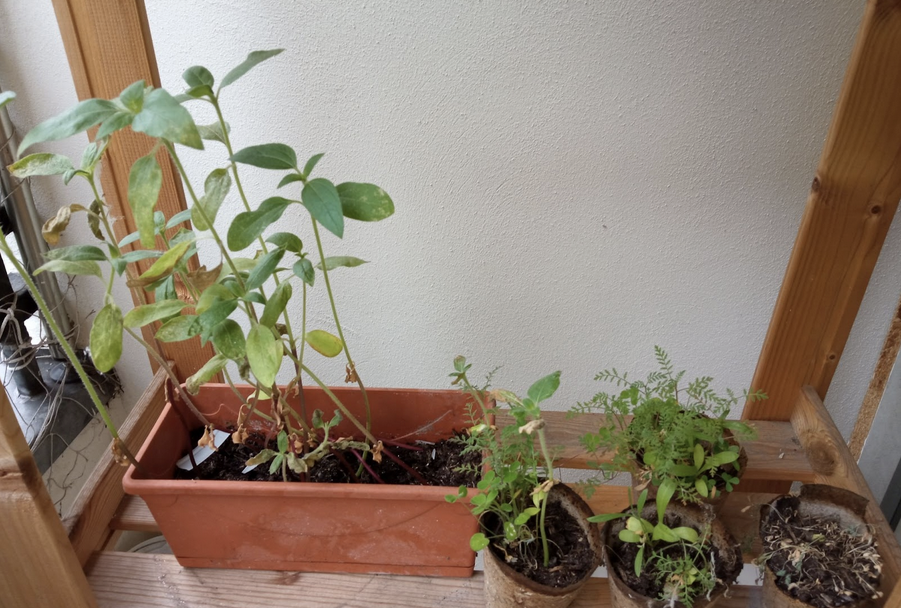
Since I’ve had some additional soil I decided to bring some “almost dead” potatoes (yes sorry i forgot i had them) back to life, just to have something to show as progress.
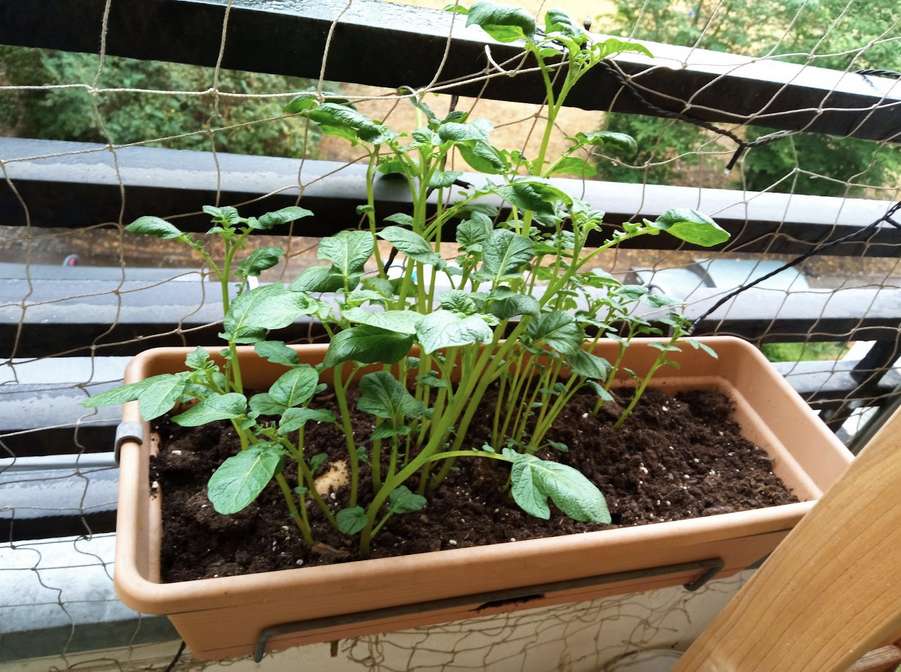
In the sense of our original plan to observe the reaction from the neighborhood i have nothing to show off yet, but on my scout missions for the “perfect space” i’ve noticed,that in this neighborhood people do seem to care about ways to create beauty (sometimes in unusual ways) in front of their homes, within a dense housing situation:
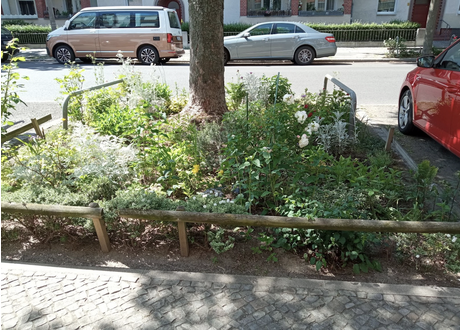
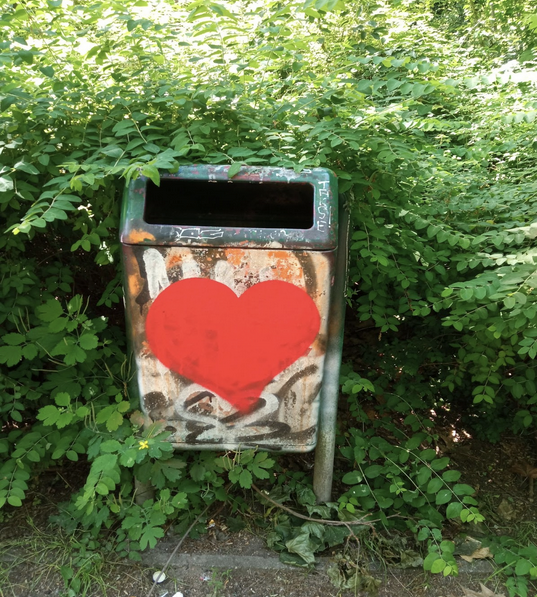
I will let you know what will be the reactions (or if there are any) when I finally get to set the green little oxygene factories out into their natural habitat.
Georg has been building a small raised bed by his own front door with help of a friend from my old home town of Leipzig.
Day one of building a own raised bed from a Europalette was kinda hard as we only had simple tools to work with.
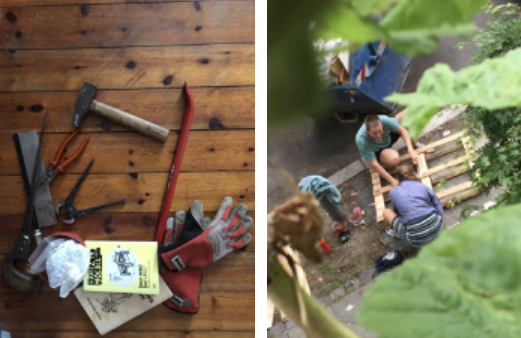
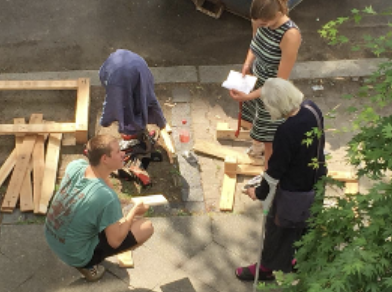
We were detaching the Pallet parts and afterwards reattaching the parts back together. It took far longer than expected.
Already on the first day we garnered attention from my house community. Getting books and wooden material to work with.
Day Two of building an own raised bed we continued to work towards finishing our Project.
Also on day two the Project’s sight caused attention by walkers and bystanders asking questions about what we were doing.
All were positive or at least neutral about my project idea. day one and day two were on 04. and 07. of June
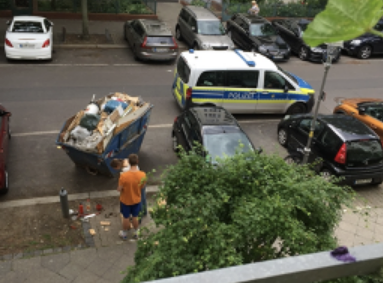
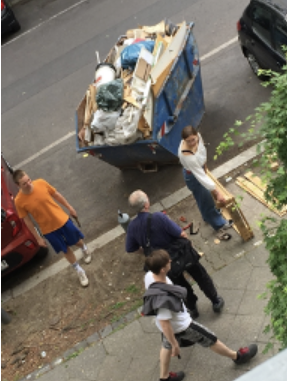
Day three was about finishing the Project.
It was strongly delayed due to Corona and other Illnesses caused by a Festival.
I was in need of additional wood, so I bought it at a local Bauhaus store together with the earth (120l of earth + 3 Parts of Wood each 1m long) for abou 21€.
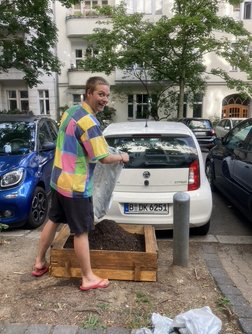
After finishing the raised bed it was great to see the first reactions of community members and dwellers of my street in the Kiez (more in the Presentation on Wednesday) With the new raised bed what was intended was not only to make the street more beautiful but also to protect the trees with their huge roots from cars parking on their roots. How this will end up is still to be questioned.
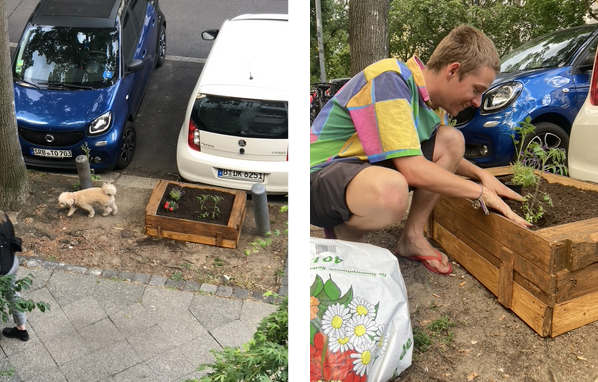
In the raised bed there is now a variety of plants with some additions to the three plants planted in the beginning. The first three plants were two Tomatoes and one Lavendel. Additions were not only made by me but also by people I don’t know. Which is great to see that the garden is also used by others.
